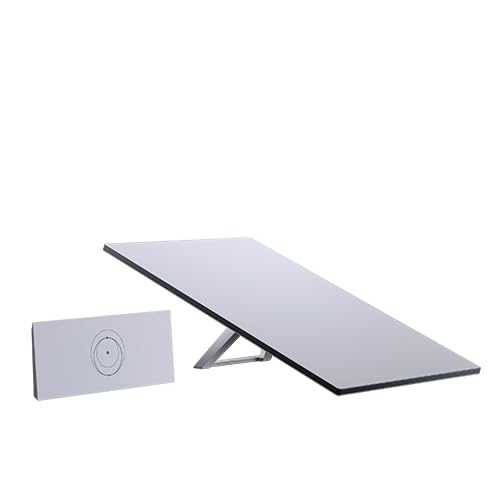Get your copy now. PowerShell Essentials for Beginners – With Script Samples
I begin by mapping how rapid growth is changing retail. Global retail sales are set to pass $3.6 trillion this year, and that scale forces fast choices for brands and business leaders.
I focus on outcomes you can measure: revenue lift, better margins, and smoother operations. My aim is pragmatic — I will link each trend to clear actions you can take within your strategy.
AI now drives personalization, predictive analytics, automation, and fraud prevention. Live video shopping and AR are reshaping discovery, while voice and mobile-first design shorten time-to-purchase.
As consumers expect seamless paths from discovery to checkout, brands that tie content, product, and trust signals together will win.
Key Takeaways
- AI and data maturity will separate short-lived hype from real ROI.
- Creator-led and live commerce expand reach and shorten purchase cycles.
- Composable systems and flexible payments speed innovation and reduce risk.
- AR, voice, and mobile-first UX turn browsing into guided buying.
- Trust, transparency, and resilient supply chains protect conversion and loyalty.
Executive summary: How I see the 2025 e-commerce landscape shaping up
I focus on practical moves that turn emerging tech into uplift for sales and margins. Global sales are set to surpass $3.6 trillion, and that scale forces clear priorities for my roadmap.
Consumers now expect hyper-personalization, transparent data use, and immersive, convenient experiences. Mobile dominates traffic and checkout innovations like one-click flows are setting new norms.
Retail media is maturing fast, shifting from scattershot buys to precision spending backed by first-party signals and incrementality. That change makes retail media a high-margin growth engine for brands that measure outcomes.
- I expect consumers to reward brands that streamline discovery and build confidence with reviews and provenance.
- AI across the stack will drive superior inventory, pricing, and retention when paired with good data and observability.
- Social discovery, livestream formats, and creator-led content will keep compressing the funnel and lifting conversion velocity.
“My strategy focuses on initiatives that show measurable lift in sales, retention, and contribution margin within 90–180 days.”
My recommended approach pairs composable architecture with pragmatic resource allocation and strong analytics baselines. That strategy lets teams experiment faster while protecting margin and trust in a crowded market.
E-commerce trends to watch in 2025: What I’m prioritizing and why
I focus on actions that move the needle for conversion, AOV, and repeat purchase fast. My checklist weighs direct customer uplift, margin effects, and how quickly a tool proves value.
The business impact lens: conversion, AOV, loyalty, and margin
I rank initiatives by near-term effects on conversion rates and average order value. I also measure loyalty gains from lifecycle messaging—personalized email, SMS, and triggers that match customer intent and recency.
I count operational wins toward contribution margin. AI automation improves support resolution, inventory forecasting, order routing, and fraud prevention—freeing teams for strategy. Retail media can deliver 40–60% margins for some retailers and is projected to reach 15.4% of ad revenue by 2028, so I treat media spend as a margin lever.
The technology lens: maturity, feasibility, and time-to-value
I assess whether a technology is production-ready, integrates with platforms, and can deliver value within 90 days. Total cost of ownership matters: internal skills, vendor complexity, and support needs influence my sequencing.
I prioritize clear analytics—incrementality tests, multi-touch coverage, and cohort retention—to prove true impact beyond vanity metrics. Pilots must scale: start shoppable video on a few high-traffic PDPs, then expand. I embed customer privacy and data ethics from day one and set milestones with stop/go criteria tied to outcomes.
- Practical strategies: favor pilots with measurable KPIs and low friction.
- Operational practices: count AI-assisted demand planning and return reduction as margin wins.
- Stakeholder alignment: milestones, budgets, and customer outcomes guide go/no-go decisions.
AI moves from hype to hard ROI: personalization, predictive, and automation
AI is shifting from buzzword status into a set of tactical levers that drive measurable ROI across merchandising and support.
I prioritize three practical streams: hyper-personalization, predictive models, and end-to-end automation. Each stream links model outputs to clear KPIs like conversion, retention, and reduced cost-per-resolution.
Hyper-personalization at session speed
I use real-time data to adapt product recommendations, dynamic content blocks, and 1:1 offers during a single session. This treats each customer as a segment of one and lifts conversion without overwhelming repeat customers.
Predictive analytics for demand and churn
Predictive models flag churn risk, suggest next-best actions, and sharpen demand forecasts. These signals let me time emails and SMS so customers get relevant outreach rather than noise.
Automation across ops and fraud
AI chatbots deflect routine support, inventory models cut stockouts, and fraud engines stop anomalies before losses occur. Those efficiencies free teams and improve margins.
Agentic commerce and conversational search
Agentic shopping assistants can assemble baskets, compare prices, and trigger reorders. Conversational search maps intent to curated, shoppable results and shortens the path to purchase.
- Tools and pipelines: unify event streams across channels to keep experiences consistent.
- Governance: human review, brand guardrails, and accuracy checks for sensitive outputs.
- Start small: pilot on one category or lifecycle stage, then scale once data quality is proven.
| Use case | Primary metric | Expected impact |
|---|---|---|
| Behavior recommendations | Conversion rate | +5–15% uplift |
| Churn scoring | Retention | Reduced churn by targeted offers |
| AI automation (support/fraud) | Resolution time / Loss prevented | Lower costs, fewer chargebacks |
| Agentic commerce | Repeat orders | Faster reorders, higher AOV |
I recommend connecting AI outputs to experimentation frameworks so every model shows continuous lift and measurable impact.
Social, livestream, and creator commerce reshape discovery and conversion

I explain why live formats and authentic content now unlock measurable conversion lifts. U.S. livestream shopping hit $50 billion in 2023 and is on track for roughly $68 billion by 2026. That growth changes how I plan media and retail plays for fast ROI.
Livestream mechanics that drive immediate decisions
Live sessions use limited drops, timed offers, and real-time Q&A to build urgency. Those mechanics push viewers from interest into purchases during the stream.
Creator, affiliate, and UGC strategies
I favor creator-led content because trust beats generic ads. Whitelisting, affiliate links, and Spark Ads scale reach while keeping endorsements credible.
Shoppable formats and AR for confidence
Shoppable video reduces friction by letting customers buy inside content. AR try-ons on social platforms cut fit anxiety and raise conversion and engagement.
- Measure: view-to-purchase, assisted conversions, and incrementality tests.
- Ops tips: clear briefs, brand-safe guidelines, and performance-based pay for creators.
- Platform mix: TikTok Shop, Instagram Shopping, and niche platforms mapped to category fit.
Integration of authentic content and tight measurement is how I turn social reach into repeatable revenue.
Mobile-first experiences win: speed, UX, and thumb-friendly checkout
Mobile accounted for roughly 70% of online traffic in 2024. That means I prioritize designs that make decisions fast and reduce friction for customers.
Design principles that increase conversion rates on small screens
I favor concise copy, large tap targets, and sticky CTAs so shoppers find actions without hunting. Fast image loading and lazy loading keep first contentful paint low and reduce abandonment.
Personalized modules above the fold let customers scan and decide quickly. Accessibility — contrast, focus states, and screen reader support — expands reach and cuts friction for everyone.
Lifecycle tactics: SMS, mobile email, and push aligned to intent
I use SMS for high-intent nudges, mobile-friendly emails for browse recovery, and push tied to real behaviors. Deep links and in-app messages return customers straight to saved carts or wishlists.
“One-tap wallets and guest flows turn visits into purchases with minimal effort.”
I simplify checkout with auto-fill, address validation, and one-tap wallet options to cut abandonment. I also run mobile-specific A/B tests that measure speed and layout impact on session value over time.
- Performance: set strict budgets and measure interaction time and load time.
- Analytics: segment mobile sessions to find form-field friction with the right tools.
- Ops: connect wallet adoption to lower checkout abandonment and faster repeat buys.
Payments get flexible and invisible: wallets, BNPL, and one-click checkout

I prioritize payments that disappear into the flow, so customers face no friction at the final step.
Ten percent of shoppers abandon carts when their preferred method is missing. I offer diverse options—digital wallets, BNPL, and one-click—to close that gap and lift conversion.
BNPL’s upside and guardrails
BNPL can raise AOV and lower upfront cost, but I add guardrails. I require clear disclosures, soft credit checks, and budgeting prompts so the customer avoids overextension.
Wallets, tokenization, and trust
Apple Pay and Google Pay speed checkout with tokenization and biometrics. I emphasize 3D Secure when needed and show any fees up front to reduce perceived risk.
Invisible payments and orchestration
I use background authentication and stored credentials to make repeat purchases nearly effortless. Payment orchestration routes transactions for higher approvals and fewer declines.
- I measure abandonment rate, authorization rate, and repeat purchase velocity after wallet adoption.
- I advise retailers to track chargeback ratios and run UX audits for mobile checkout clarity.
Composable and headless commerce: agility through modular platforms
I prefer modular stacks because they let teams experiment without risking the core business. A composable approach connects best-of-breed tools via APIs so replacements are low cost and low risk.
API-first architecture speeds time to market and simplifies integration with CMS, inventory, and marketing automation. Headless separates front end from back end so developers can use frameworks like Next.js or Remix for faster, snappier storefronts.
- Modular choice: brands pick best tools for search, merchandising, content, and checkout without vendor lock-in.
- Unified data: API integrations keep data consistent and let me iterate experiences across channels quickly.
- Headless benefits: faster pages, unique design control, and parallel development that cuts launch time.
My recommended strategy is phased: pilot headless on a campaign microsite, measure page speed and conversion lift, then scale. Governance—versioning, rate limits, and observability—protects uptime during frequent releases.
Success metrics I watch are page speed, conversion impact from UX changes, and reduced time-to-launch for new features. I also plan migration fallbacks to protect revenue while the platform transition completes.
AR, 3D, and voice search make shopping more immersive and convenient
I see immersive tech turning browsing into near-physical shopping, closing gaps where photos once failed.
The AR market is set to jump from $5.8 billion in 2024 to $38.5 billion by 2030. I use that growth as a cue: virtual try-ons and room placement tools cut uncertainty and speed decisions.
Try-before-you-buy with virtual try-ons and real-world placement
Virtual try-ons reduce returns for apparel, eyewear, and beauty by improving fit confidence. I integrate 3D models on product pages so shoppers see scale and detail before checkout.
Room placement tools help consumers visualize furniture and home items in context. That lowers hesitation and shortens time to convert.
Optimizing content for conversational, voice-enabled product search
I optimize content for voice by using concise, conversational phrasing, structured product data, and featured-snippet targets. As of now, about 35% of U.S. residents 12+ own a smart speaker, so voice readiness matters.
- Performance: fast pages and mobile readiness are prerequisites for voice ranking.
- Measurement: track conversion lift, return-rate drops, and dwell time on 3D assets.
- Pilot: launch shoppable AR on a few high-impact products and measure baseline changes before scaling.
| Use case | Primary metric | Expected outcome |
|---|---|---|
| Virtual try-on (apparel/beauty) | Return rate | Reduced returns, higher fit confidence |
| 3D room placement | Conversion rate | Faster purchase decisions, higher AOV |
| Voice-optimized content | Search answer rate | More organic voice traffic, quicker answers |
I recommend using AR interaction data to refine merchandising and content priorities, while ensuring accessibility and broad device support during rollout.
Retail media and measurement maturity: from spray-and-pray to precision
Measurement maturity is what separates noisy ad spend from real, repeatable sales impact. I treat retail media as a profitability lever that leans on first-party data and careful measurement.
RMNs, first-party data, and higher-margin growth opportunities
Retail media has reached roughly $30 billion faster than search and social, with some retailers reporting 40–60% margins. I advise brands to use richer behavioral signals beyond loyalty tiers so audience targeting avoids wasted impressions.
Multi-touch attribution and incrementality to prove true impact
I recommend a measurement plan that pairs multi-touch attribution with controlled incrementality tests. Amazon Ads is piloting MTA models that blend machine learning and A/B tests; that approach shows how credit can be distributed across touchpoints rather than relying on last-touch alone.
- I map creative and placements by funnel stage—on-site sponsored products, discovery units, and off-site DSP buys—so each channel serves a clear role.
- I require privacy-safe clean-room collaborations for shared data so audience quality improves without compliance risk.
- I set optimization rhythms: bid strategy reviews, budget pacing checks, and negative-keyword hygiene to protect ROAS and brand safety.
“Retail media becomes a repeatable growth engine when reporting unifies MTA and last-touch metrics for executive clarity.”
Finally, I recommend staffing RMNs with dedicated account and buying roles and building dashboards that surface new-to-brand sales and category share. That way measurement drives real business impact, not just impressions.
Customers increasingly buy based on verified sourcing and clear sustainability signals, and I build systems that prove those claims.
The global blockchain market rose from about $17 billion in 2023 and is projected to exceed $943 billion by 2032. I use blockchain for secure payments, tamper-evident provenance, and compact audit trails that strengthen trust signals on product pages.
Secure provenance and payment verification
Blockchain adds tamper-evident records that help customers verify origin and authenticity. That reduces fraud and protects the brand while giving clear evidence for sustainability claims.
Secondhand and resale strategies
UK surveys show 44% of people buy more secondhand than a year ago and 57% keep steady re-commerce habits. I recommend brand-operated resale, refurbishment partnerships, and AI wear-grading as practical options that expand reach without diluting brand equity.
AI-driven supply chain resilience
AI enables demand forecasting, digital twins, supplier tracing, and emissions baselining. I use these tools for preventative maintenance, fewer stockouts, and to surface emissions data on PDPs as badges for values-based buyers.
- Operational KPIs: sell-through rate, margin by channel, and new-customer acquisition via resale offers.
- Brand protection & practices: anti-counterfeit checks, privacy-by-design, and transparent sourcing disclosures.
- My strategy: combine provenance tech, circular options, and AI forecasting so commerce decisions are resilient and trusted.
Get your copy now. PowerShell Essentials for Beginners – With Script Samples

Conclusion
I wrap up with a simple playbook for turning new tech into repeatable revenue.
I recap the core trends and link each initiative to measurable sales and retention goals. I recommend an approach that pairs fast pilots with strict experimentation so teams learn quickly and stop what doesn’t work.
Prioritize mobile-first shopping, flexible payments, and performance tuning to convert intent into orders. Build trust through transparency, provenance, and clear sustainability data that helps customers decide.
Refine experiences with AR and conversational search to cut friction from consideration to cart. Scale retail media with incrementality tests and invest in composable systems so new features ship fast without heavy replatforming.
My pragmatic next steps: define pilots, instrument metrics, run quarterly roadmap reviews, and iterate relentlessly. Customer-centric execution—backed by clean data and ethical AI—will set leading brands apart.
FAQ
What are the top shifts I should prioritize for online sales growth?
I focus on personalization powered by AI, faster mobile experiences, and flexible payments. Those areas tend to lift conversion, average order value (AOV), and repeat purchase rates while lowering churn and checkout abandonment.
How can I measure ROI from AI investments like personalization and predictive analytics?
I track incremental conversion lift, change in AOV, reduction in return rates, and improvements in retention. I also run A/B tests with control groups and measure lift in customer lifetime value (CLV) and margin contribution.
Which social platforms deliver the fastest path to purchase?
I find TikTok and Instagram Reels drive discovery and impulse buys, while livestream features on those platforms plus YouTube help with longer consideration and real-time conversion. Creator partnerships amplify trust and click-throughs.
What small-screen design changes yield the biggest conversion gains?
I simplify navigation, prioritize thumb-reachable CTAs, streamline forms, and reduce image and script weight. One-click checkout or stored payment methods and clear progress indicators also cut abandonment significantly.
How should I approach BNPL and wallet integrations responsibly?
I evaluate partner risk, fees, and customer financial well-being. I present BNPL as an option, not the default, and surface transparent terms. I also tokenize card data and support major wallets to speed checkout and build trust.
When does headless or composable architecture make sense for my business?
I move to composable setups when I need faster experimentation, omnichannel front ends, or integration with best-of-breed services. For many merchants, a phased approach avoids upfront disruption while unlocking agility.
What use cases of AR and 3D deliver measurable sales impact?
I prioritize AR for fit and placement—apparel try-ons, furniture in-room previews—where returns fall and conversion rises. 3D product views increase engagement and buyer confidence for high-consideration items.
How do I prove the value of retail media and first-party data?
I use incrementality tests, matched control groups, and multi-touch attribution to show ad-driven sales lift. I also tie RMN spend to higher-margin categories and leverage first-party signals to improve targeting and measurement.
What controls should I add for AI-driven automation across support and fulfillment?
I implement human-in-the-loop checks, clear escalation paths, and monitoring dashboards for error rates and customer satisfaction. I also set conservative automation scopes first, then expand as accuracy and trust improve.
How can I balance sustainability goals with profit and customer expectations?
I prioritize transparent sourcing, reuse and resale programs, and emissions reporting where it matters to my customers. Small changes—packaging optimization, inventory forecasting—often cut costs while supporting sustainability claims.
Which metrics best reflect customer experience improvements?
I watch conversion rate, NPS, repeat purchase rate, cart abandonment, and time-to-fulfill. Together they show whether UX, content, and fulfillment changes truly move business outcomes.
What role will voice and conversational search play in purchase paths?
I optimize product content for natural language and conversational queries. Voice will speed reorders and assistive shopping, so I focus on structured data, short answers, and fast fulfillment options for voice-driven intent.
How do I avoid overreliance on a single platform or channel?
I diversify by investing in owned channels (email, SMS, app), retail media, direct site UX, and multiple social platforms. I also build first-party data capture and interoperable APIs to move audiences between channels.
What quick wins boost conversion without large tech investments?
I improve product descriptions, add high-quality images or short videos, simplify checkout steps, and enable guest checkout. Personalized promos and post-purchase communications also lift repeat sales at low cost.
How should I structure experimentation to prioritize high-impact projects?
I score ideas by expected revenue lift, implementation time, and risk. I run rapid tests for high-score items, measure statistically significant outcomes, and scale winners while documenting learnings for the team.















